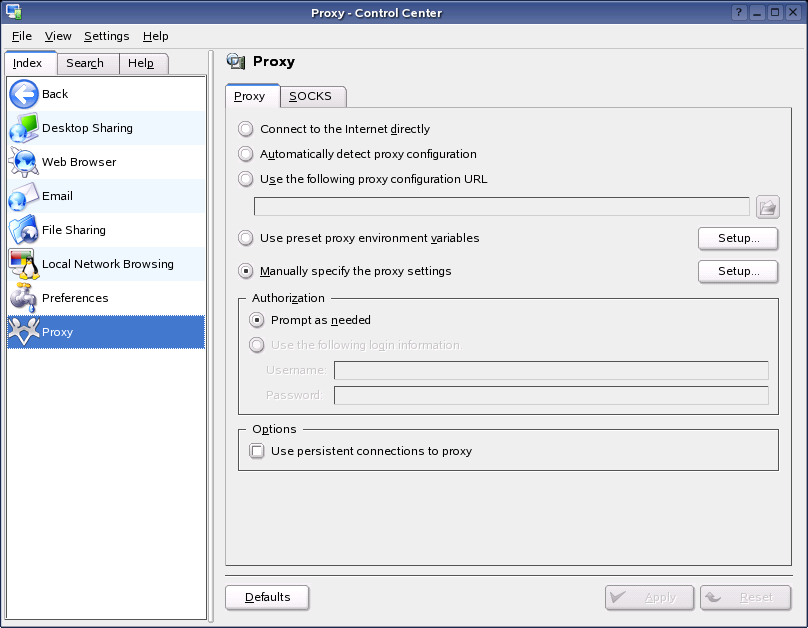3.3 Internet & Network Settings
Use the settings under the Internet & Network category to configure internet and networking options.
3.3.1 Sharing Your Desktop
Click .
Desktop Sharing lets you invite someone to share your session with you, or can let you log in remotely to your machine from another location. You would then use a VNC client such as KDE’s Remote Desktop Connection application to control your desktop over the network. This is extremely useful if you want someone to help you perform a task.
Figure 46 KDE Control Center Desktop Sharing Dialog
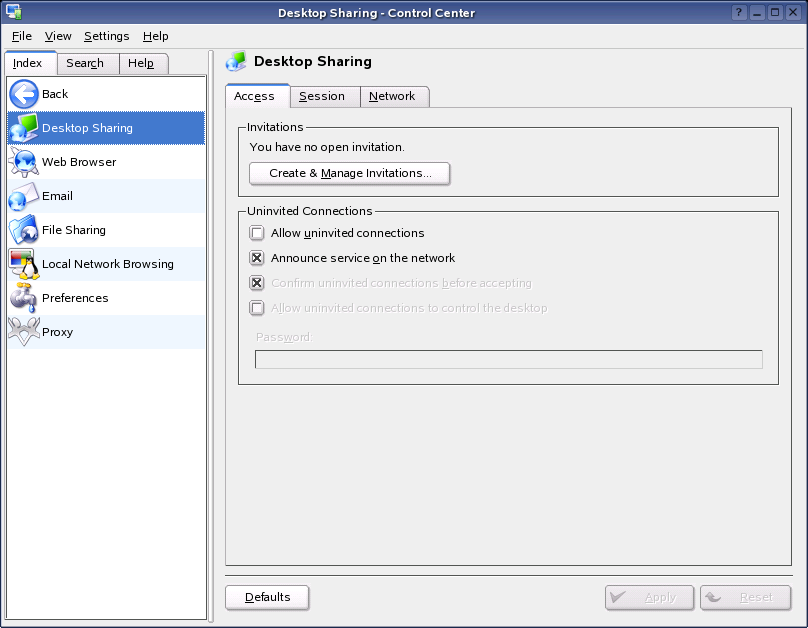
Use this module to create and manage invitations as well as set your security policy for uninvited connections. You can also configure whether to show a background image and which port the service should listen on.
3.3.2 Configuring Web Browser Options
Click .
This module lets you configure options relating to Konqueror as a Web browser. The usual options you would expect from a Web browser, such as cookie configuration, cache, and history are found here, as well as sections that let you modify keyboard shortcuts, plug-ins, and fonts.
Figure 47 KDE Control Center Web Browser Dialog
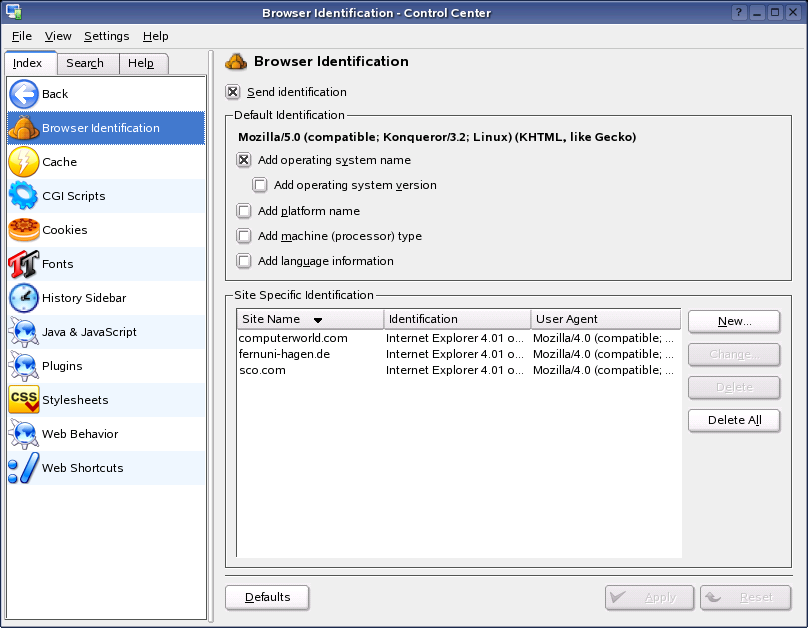
3.3.3 Setting Email Information
Click .
This module lets you enter basic e-mail information for the current user. The information listed here is used, among other things, for sending bug reports to the KDE developers when you use the bug report dialog.
Figure 48 KDE Control Center Email Dialog
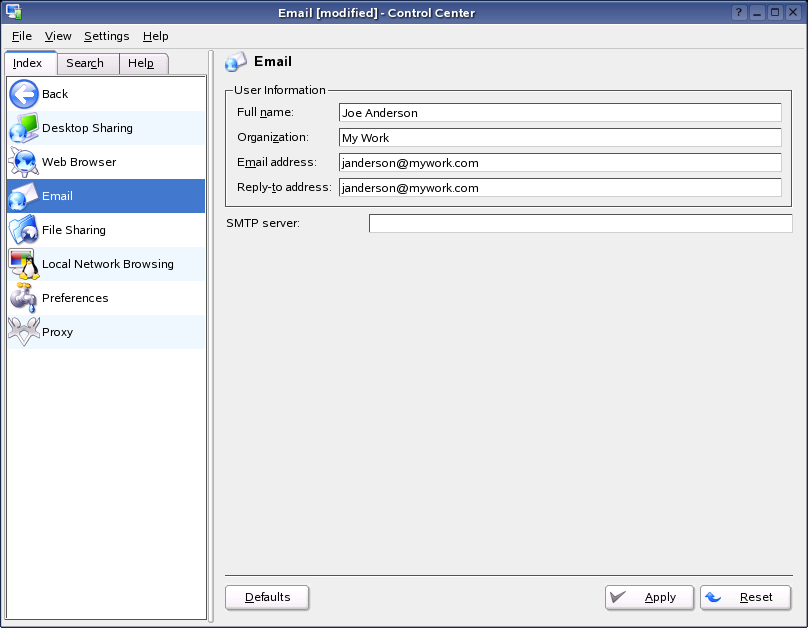
E-mail programs such as KMail offer many more features, and they provide their own configuration facilities.
3.3.4 Configuring File Sharing Options
Click .
File sharing allows you to configure Samba (Microsoft Windows) and NFS (UNIX*) file sharing. To make changes in this module, you need to have the root or administrator password. This is where you set up whether users are allowed to share files without knowing the root password, and which users are allowed to do so. You can also configure which folders you want to be shared, the kind of sharing to be used, and who is allowed to view these shares.
Figure 49 KDE Control Center File Sharing Dialog
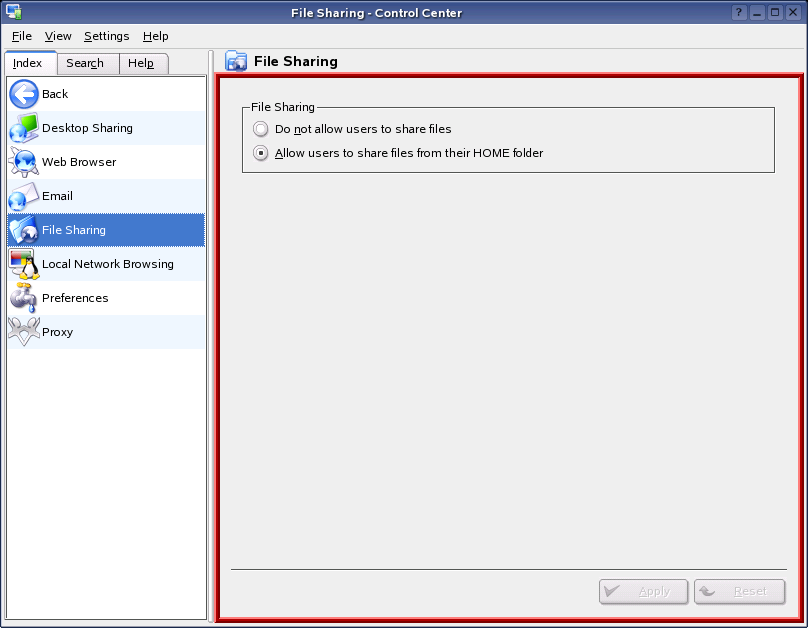
For more information on file sharing, see Creating Your Own Network Shares.
3.3.5 Configuring Local Network Browsing
Click .
Use this module to configure options related to browsing network shares in Konqueror. Konqueror is able to browse a variety of network shares and manipulate remote files as though they were on your local machine. You can configure it to remember your preferred username and password for connecting to Windows shares (Samba). You can also set what types of network shares you want to be able to browse, including FTP, NFS, and SMB.
Figure 50 KDE Control Center Local Network Browsing Dialog
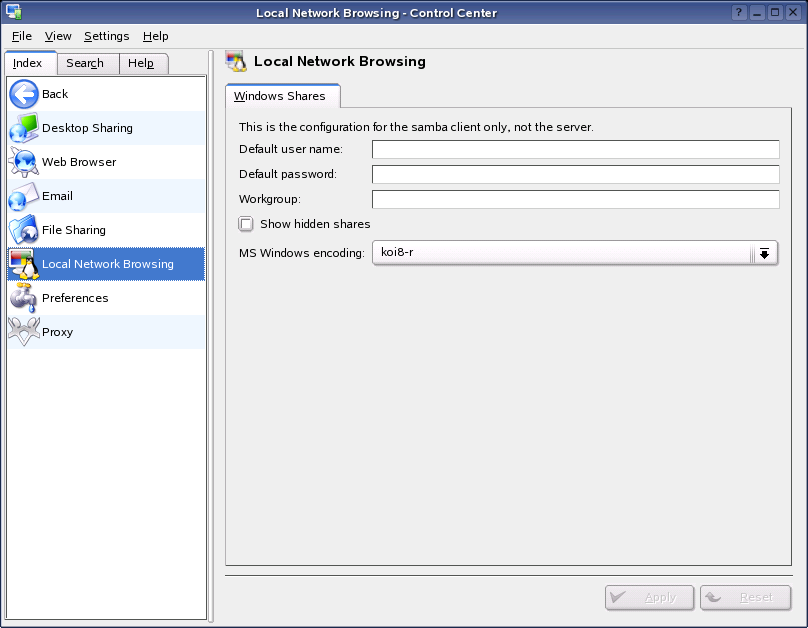
For more information, see Using Konqueror to Make One of Your Own Directories Available to Other Network Users.
3.3.6 Setting Advanced Network Preferences
Click .
Use this module to set advanced networking options such as timeout values for server connects. You should leave these options at the default values unless you have advanced knowledge about this functionality.
Figure 51 KDE Control Center Preferences Dialog
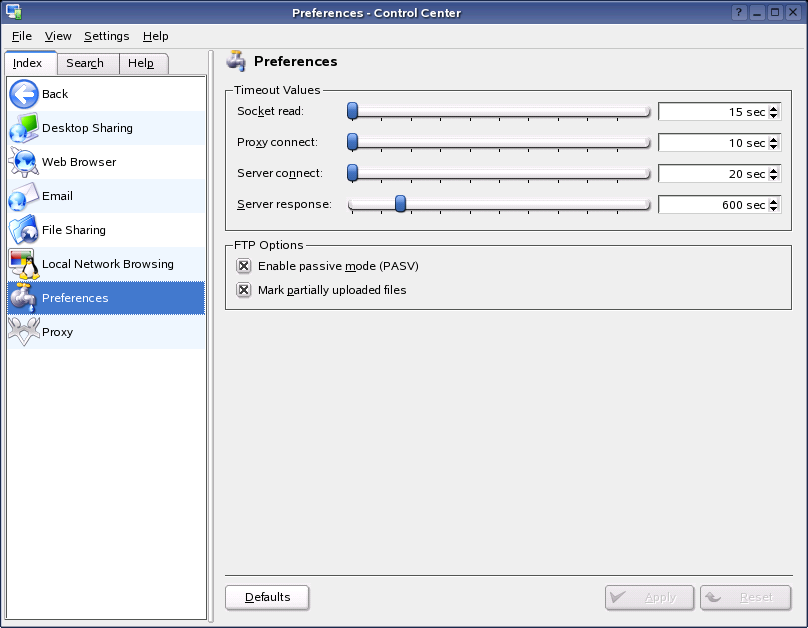
3.3.7 Connecting to a Proxy Server
Click .
Use this module to configure KDE to connect to a proxy server rather than directly to the Internet. You should generally leave these options at their default values unless you have advanced knowledge about this functionality. If you do use a proxy server, your network administrator will be able to tell you what details to fill in here.
Figure 52 KDE Control Center Proxy Dialog
